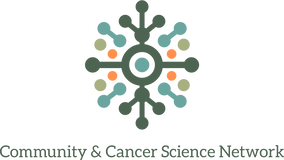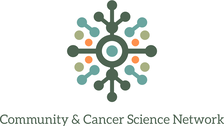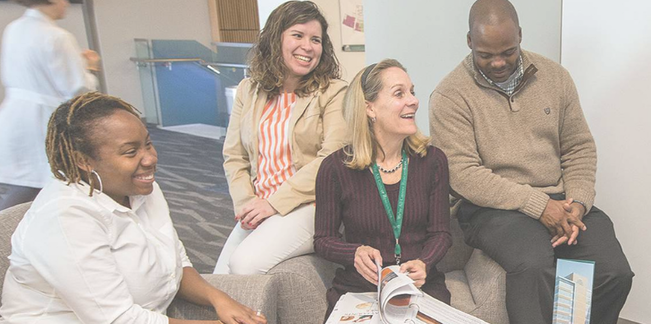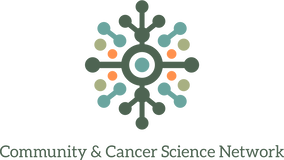by Alexis Krause, MPH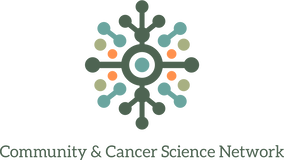 In CCSN’s first year, we were focused on providing a strong foundation for its three initial programs. Once this foundation was set, we realized we needed to focus more on our communication strategies. Mainly focusing on how we communicate with those outside of our network, and how to promote our efforts to other stakeholders working in cancer disparities. This blog explains the process of how I have learned to use visuals as communication tools to create brand recognition and convey messaging to multiple target audiences- without being an expert in communications or design. The first promotional item I developed was our logo. CCSN needed its own logo because it would provide a unifying image that would remain with our network, even as we continue to grow and expand. Logos can also convey core values and provide brand recognition, having people equate the image with an initiative’s, hopefully positive, reputation at a quick glance. Since I do not have experience in logo creation, I sought out a webtool with the following features to help me create a high quality image:
I discovered the website BrandCrowd met each of these requirements, all while being an extremely user-friendly platform. Selecting and customizing the logo was a collaborative effort within our leadership team. Tobi Cawthra, the Program Manager for CCSN and one if its original founders, noticed symbolism in the logo’s shape. She found it to resemble how CCSN brings people together with different experiences and perspectives around a central unifying purpose. And after she explained this symbolism, our team completely agreed! Color choice for a logo is also an important component because color can convey its own messaging within an image. After playing around with a variety of color palates and multiple team deliberations, we decided on the logo above to represent CCSN. Greens are often associated with growth, and felt organic and neutral. Blue tones are often associated with trust and clarity, and the orange provides energy and vibrancy. And just like that, it all came together, and we had created and purchased CCSN’s logo! In addition to a logo, we needed a website that could reflect the vastness of our partners, help increase our visibility, and legitimize CCSN in an ever-growing digital world. Tobi had already created a domain/web address for CCSN through a web building platform called Weelby. Weebly has a plethora of tools delivering customization of nearly every aspect of a website, which is awesome, but can also be daunting to figure out where to begin. Thankfully, Collaborative Work Group’s Co-leader, David Frazer helped Tobi and I think about the website’s audiences, which content was necessary for those audiences, and consider the styles of other websites to start envisioning what CCSN’s could be. We quickly agreed that both community members and cancer researchers would use the website for information and as a way to connect with CCSN. From there, I had a lot of creative freedom with the website. I really liked the idea of having the home page show off multiple communities throughout Milwaukee, and a drone video-banner was able to accomplish that better than a still photo could. I also decided to incorporate the logo and logo colors throughout the website to reinforce brand recognition. All of these visual aspects have come together nicely in combination with the written content our teams have developed over the past years. And as our initiatives progress, we can continue to reimagine and adjust using these tips I’ve learned along the way:
2 Comments
Coming Together is Easy. Working Together is Hard, But Worth It.by Laura Pinsoneault, PhD, Evaluation Plus & |
Archives
May 2022
Categories |


